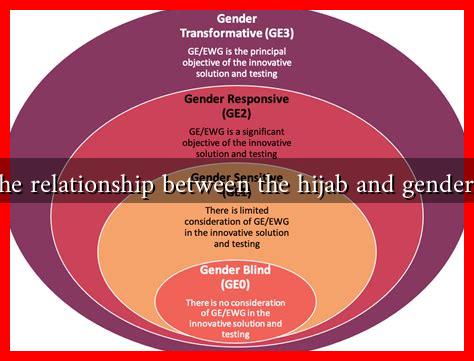-
Table of Contents
What is the Relationship Between the Hijab and Gender Equality?
The hijab, a traditional headscarf worn by many Muslim women, has become a focal point in discussions about gender equality, cultural identity, and personal freedom. While some view the hijab as a symbol of oppression, others see it as an expression of autonomy and empowerment. This article explores the complex relationship between the hijab and gender equality, examining various perspectives, cultural contexts, and the implications for women’s rights.
The Hijab: A Symbol of Faith and Identity
For many Muslim women, the hijab is not merely a piece of clothing but a profound expression of their faith and identity. It serves multiple purposes:
- Religious Obligation: In Islam, modesty is a significant tenet, and the hijab is often seen as a requirement for women to adhere to this principle.
- Cultural Identity: The hijab can signify cultural heritage and community belonging, allowing women to connect with their roots.
- Personal Empowerment: Many women choose to wear the hijab as an assertion of their autonomy, reclaiming their bodies and choices in a world that often objectifies women.
Perceptions of Oppression vs. Empowerment
The hijab has been at the center of debates regarding women’s rights and gender equality. Critics argue that it symbolizes oppression and restricts women’s freedom. However, this perspective often overlooks the voices of women who choose to wear it voluntarily. Key points in this debate include:
- Western Perspectives: In many Western societies, the hijab is often viewed through a lens of oppression, leading to policies that ban its use in public spaces, such as schools and workplaces.
- Personal Choice: Numerous studies indicate that many women wear the hijab out of personal choice rather than coercion. A 2017 study published in the journal *Gender and Society* found that 62% of Muslim women in the UK reported wearing the hijab as a personal choice.
- Intersectionality: The experience of wearing the hijab varies significantly based on cultural, social, and political contexts. For instance, in countries like Iran, wearing the hijab is mandated by law, while in Turkey, it has been a contentious issue of personal freedom.
Case Studies: The Hijab in Different Contexts
Examining the hijab in various cultural contexts reveals the nuanced relationship between the hijab and gender equality:
- France: The French government has implemented strict secular policies that ban religious symbols, including the hijab, in public schools. This has sparked debates about religious freedom and women’s rights, with many arguing that such bans infringe on personal choice.
- Saudi Arabia: In Saudi Arabia, the hijab is legally required, and women face severe penalties for non-compliance. This raises questions about autonomy and the role of state control in personal choices.
- Western Muslim Communities: In countries like Canada and the UK, Muslim women often report feeling empowered by their choice to wear the hijab, using it as a means to challenge stereotypes and assert their identity.
Statistics and Research Findings
Research indicates that the relationship between the hijab and gender equality is complex and multifaceted. Some relevant statistics include:
- A 2018 Pew Research Center survey found that 55% of Muslim women in the U.S. reported wearing the hijab as a personal choice, while 29% said they did not wear it at all.
- According to a 2020 study by the *Institute for Social Policy and Understanding*, 67% of Muslim women in America believe that wearing the hijab positively impacts their sense of identity.
Conclusion: A Multifaceted Relationship
The relationship between the hijab and gender equality is not a straightforward one. It encompasses a spectrum of experiences shaped by personal choice, cultural context, and societal norms. While some view the hijab as a symbol of oppression, many women embrace it as a form of empowerment and identity. Understanding this complexity is crucial for fostering dialogue about women’s rights and gender equality in diverse cultural contexts.
Ultimately, the hijab serves as a reminder that gender equality cannot be defined by a single narrative. It is essential to listen to the voices of women who wear the hijab and to respect their choices, recognizing that empowerment can take many forms. For further reading on this topic, you can explore resources from organizations like Human Rights Watch and Pew Research Center.


